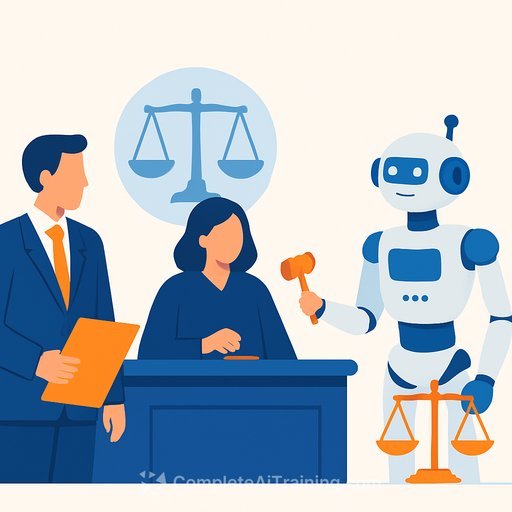The Legal Potential of Agentic AI
Agentic AI is moving legal work from prompts to outcomes. It plans, reasons, and executes multi-step tasks across tools under human oversight. For firms that manage sensitive data and high-stakes decisions, this shift brings real upside-and real exposure.
This article maps where agentic AI can streamline daily work, the risks that matter for lawyers, and how to deploy responsibly without losing control.
Agentic AI, Defined
Agentic AI goes beyond single-shot content generation. It can set sub-goals, call APIs, query databases, search the web, and take actions to meet a defined objective-while you keep final say. IBM describes these systems as capable of maintaining long-term goals and managing multi-step problem solving over time.
Under the hood, agents combine LLMs with deterministic logic and tool access. In practice, that can look like monitoring dockets and deadlines, assisting discovery review, or drafting and refining documents based on new inputs and rules.
Where It Helps in Legal Work
- Research and memo drafting: Assign a legal question. The agent builds a plan, searches sources, synthesizes, and drafts an initial memo with citations for your review.
- Contract analysis and due diligence: Review thousands of agreements for key clauses, deviations, risks, and produce summaries tied to your playbook.
- Docket and deadline management: Track filings, compute dates, and route tasks with status updates.
- Discovery support: Classify documents, surface likely privileged materials, and propose issue tags for attorney validation.
Firms are already testing agentic workflows. Wilson Sonsini launched an agent-driven contracting tool. Troutman Pepper built "Athena" to automate a large share of merger communications. LexisNexis introduced Protégé for deposition prep and transactional analysis, and Thomson Reuters is extending agentic workflows across CoCounsel.
One lesson is clear: outcomes improve when teams rework the entire workflow-not just bolt an agent onto the old process.
The Risks You Must Manage
Accountability
AI has no legal personhood. If an autonomous agent on your site answers a prospective client incorrectly, who is responsible? What if an agent initiates a transaction? Current laws strain under these scenarios, and courts will test enforceability. Treat every agent action as yours until proven otherwise.
Security and privacy
Agents need wide access: email, DMS, billing, research tools, even payment methods. That access collapses boundaries between apps and the operating system. As security leaders have warned, this creates new exposure that existing controls may not fully cover. Use role-based access, read-only defaults, and audit trails. Share a family-or-firm "safe phrase" with clients for identity checks over voice or chat.
Quality control
Shiny demos often degrade into "AI slop" once deployed. Treat agent onboarding like hiring: define the role, set KPIs, give a playbook, test on real matters, and run regular reviews. Keep experts in the loop and measure output quality, not just task completion.
Oversight and management
Autonomous, goal-seeking systems with memory and reasoning need new management approaches. Traditional, deterministic controls are insufficient on their own. Establish policy, approval gates, and incident response plans sized to agent autonomy.
Operate Responsibly
Agents are not the right tool for every job. Stable, rules-heavy tasks-like standardized regulatory disclosures-often fit simpler automation. Use agents where work is variable, multi-step, and benefits from iterative reasoning under review.
Maintain human-in-the-loop for final outputs, privilege calls, client communications, and any action with legal or financial impact.
Evaluation checklist
- Security and privacy: What client data can the agent access? How are credentials stored? Are transmissions encrypted end to end? Is there a complete access log?
- Legal and ethical risk: Can you audit actions and decisions? Who is liable if the agent errs? How are conflicts, privilege, and confidentiality enforced?
- Autonomy and oversight: What can the agent do without approval? Where is human review mandatory? Can you throttle or pause autonomy instantly?
- Functionality and fit: Which tasks are proven today? Is there a legal-specific playbook or model tuning? How does it integrate with your stack?
- Support and training: Is vendor support responsive? Can your team maintain prompts, tools, and guardrails without engineers?
Start with Rev
You do not need to start with full autonomy. Build competence with practical AI first-evidence management, transcripts, document analysis, and structured drafting. Tools like Rev can help you reduce busywork and establish the habits needed to safely scale into agentic workflows.
Want structured upskilling for your team? Explore curated programs at Complete AI Training - Courses by Job.
Start where you are. Build expertise. Stay ready for what comes next.
Your membership also unlocks:






